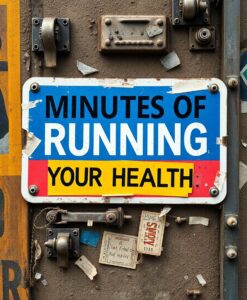From a biological standpoint, short high-intensity efforts trigger changes that steady, longer runs may not. They push the heart and muscles to adapt quickly, sharpen how the body handles glucose, and stimulate fat-burning mechanisms. Those effects matter for anyone aiming to stay healthier across decades, not only athletes, because they target core systems tied to longevity and daily energy.

If you are curious how a few sprints could fit into your routine and what that means for long-term wellbeing and fairness in access to fitness, the full piece explores the evidence and offers context. It links these exertion patterns to practical steps people can take and to broader questions about making exercise inclusive and sustainable for different bodies and schedules.
Interval running condenses the powerful effects of regular running into shorter, high-intensity bursts. Research shows it can improve cardiovascular health, regulate blood sugar, and reduce body fat more effectively than longer steady runs. Just a few short sprints per session can deliver major fitness gains.

